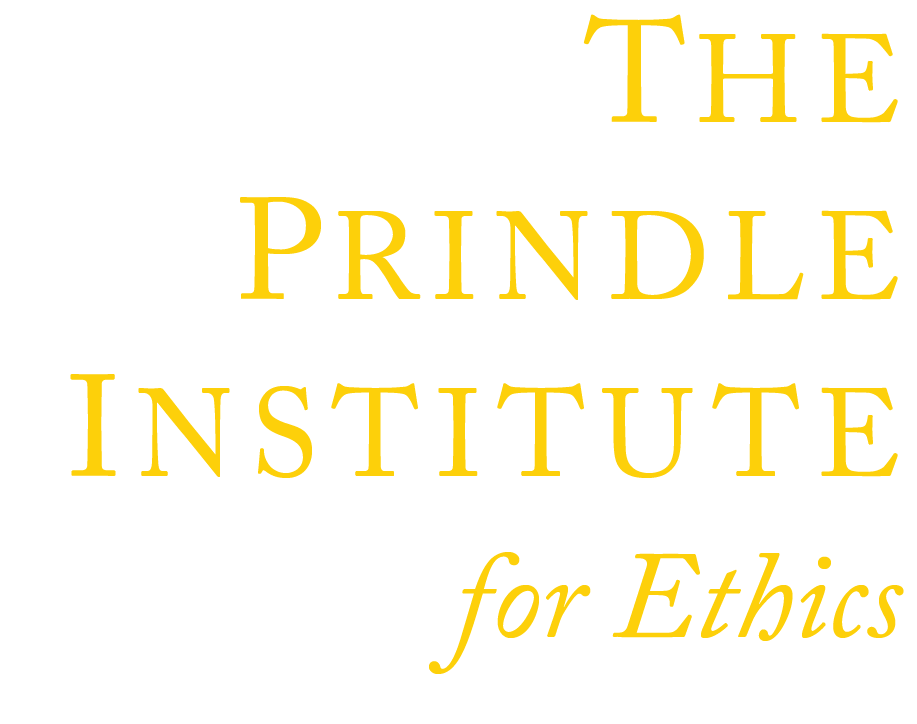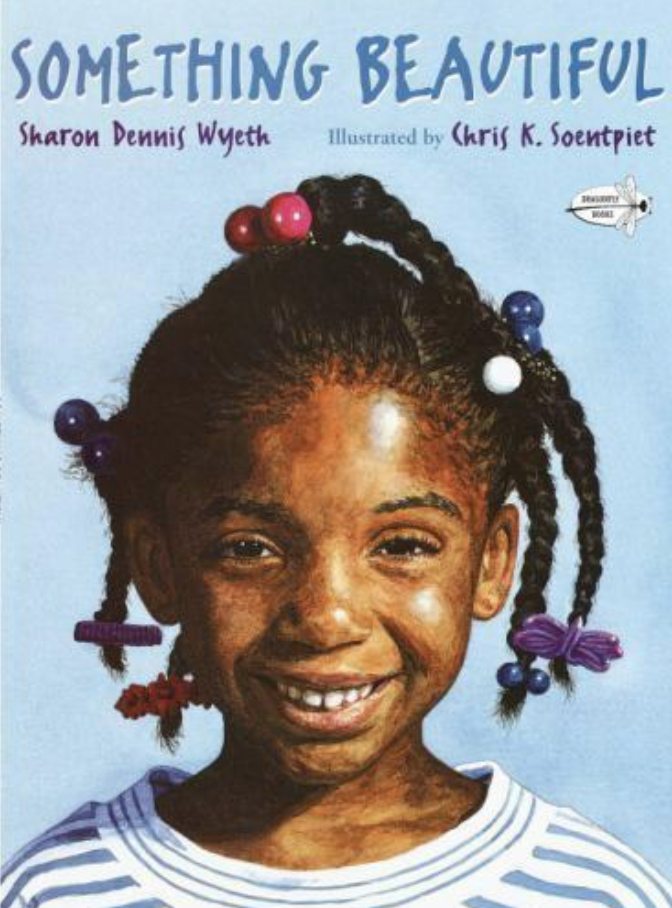Something Beautiful
Book Module Navigation
Summary
Something Beautiful deals with issues at the intersection of race, beauty, knowledge, and power.
This is a story about a young African American girl who initially sees only the ugliness in her neighborhood. After pointing out the various “ugly” aspects of her neighborhood, she seeks to find “something beautiful.” She runs into various people along the way, including Miss Delphine who says, “There is nothing more beautiful tasting than my fried fish sandwiches.” The young girl wants to find her own “something beautiful.” You’ll be surprised at how the girl creates her own piece of beauty.
Read aloud video by Raising New Stars
Guidelines for Philosophical Discussion
Something Beautiful deals with philosophical issues such as beauty and aesthetics. One of the most prominent points within the beauty theory is whether or not beauty is subjective. Is it found only in the “eye of the beholder”? Does the word “beautiful” have meaning if it’s subjective? These are all ideas that fall under the issue around beauty. This book raises questions such as: Is beauty just a physical thing? Can something be beautiful to more than one person? How do you know when something is beautiful?
The first philosophical question set comes from the part of the book when the young girl looks outside and sees all of the trash and the homeless woman, and observes some connections between sadness and beauty. These questions should be helpful for the students to discuss the idea that sad things can actually teach us something about ideas like inspiration and productivity.
The second question set dives into the relationship between knowing something and believing it. Knowledge often bases itself on belief, which is usually defined as a conviction of the truth without verification; therefore, a belief is a subjective mental interpretation derived from perceptions, reasoning, or communication. Discussing what a belief actually is with the students will strengthen their opinions around this controversial debate between knowledge and belief.
The next set of questions explores aesthetics by discussing the definition of beauty, and whether or not you can define something as beautiful even if it doesn’t look beautiful to you. The philosophical question, “What is beauty?” is still a controversial topic for many philosophers today. With these questions, a conversation can be prompted about whether ugliness and dirt can be beautiful. Also, what makes something beautiful? Is it how you look that makes you beautiful? If I say that I am beautiful, does that mean that I am?
The final question set moves away from the topic of beauty and onto discussing the notion of power, allowing the students to explore another important topic in this story. Power often comes with negative connotations, including over-control and dictatorship. The questions in the power question set are trying to help the students realize that the young girl’s action of scrubbing off the word “Die” was powerful, and it was positive! This power was paired with taking some control and asking the students to discuss power and control in a positive way to benefit their developmental processes.
The inspiration for the question sets came from two major philosophers, David Hume and Immanuel Kant. These two philosophers hold different standpoints on the subjectivity or objectivity of beauty. Hume agrees that beauty is in the “eye of the beholder” when he states: “Beauty is no quality in things themselves: It exists merely in the mind which contemplates them; and each mind perceives a different beauty. One person may even perceive deformity, where another is sensible of beauty; and every individual ought to acquiesce in his own sentiment, without pretending to regulate those of others.”
Hume admits that the ability to detect or experience beauty is fundamentally subjective, that things are based on personal feelings, tastes or opinions. In the story, the young girl conversed with many community members who told her what their, “something beautiful” was. For example, Miss Delphine says that her fried fish sandwiches have the most beautiful taste. Hume would ask, “If the young girl disagreed, and thought that the fish sandwich was not beautiful, does that make her wrong? Would Miss Delphine’s sandwiches no longer be beautiful?”
Kant disagrees with Hume’s account of beauty and says: “We easily see that, in saying it is beautiful, and in showing that I have taste, I am concerned, not with that in which I depend on the existence of the object, but with that which I make out of this representation in myself. Everyone must admit that a judgment about beauty, in which the least interest mingles, is very partial and is not a pure judgment of taste.”
Kant holds a more objective view of beauty. He thinks it is definitely possible to actually disagree and argue about whether something is beautiful. Kant argues that judgment must be made objectively and independently from typical human desires. He relates to the questions regarding knowledge and belief. He would ask, is beauty really held in the eye of the beholder, or is it merely based on experience? In the story, the young girl conversed with many community members who told her what their “something beautiful” was. For example, Miss Delphine says that her fried fish sandwiches have the most beautiful taste. Kant would ask: Why do we need to agree the Miss Delphine’s fish sandwiches have a beautiful taste? How do we know she is right about how they taste, and why does the young girl, or anyone for that matter, have to agree? Beauty isn’t in the “eye of the beholder,” Kant would say, it is based on personal experience but in a way that presumes that others will agree.
Questions for Philosophical Discussion
Sadness and Beauty
The girl saw the trash outside her window, the word “Die” written on her door, and the homeless lady on the sidewalk.
- Do beautiful things always make you happy?
- Who decides whether or not something is beautiful?
- What does beautiful look like? Sound like? Feel like?
- Do sad things and beautiful things ever look/sound/feel the same?
- Is beauty only a feminine quality? Can boys be beautiful? Why or why not?
- When is it helpful to be beautiful, and when is it detrimental?
- Do you think that it upset the girl to see the homeless lady, the word “Die,” and the trash, or do you think it was inspiring?
- Can something sad be inspiring?
- Is it difficult to find something beautiful? Why or why not?
- Did she decide to find something beautiful once she saw these things, or do you think she always wanted to find something beautiful?
Knowledge and Error
The girl asked her neighbors what they thought was beautiful.
- Have you ever been wrong about something?
- Before you knew you were wrong, do you remember “knowing” you were right?
- What does it feel like to know something, and have someone tell you you’re wrong?
- Talk about a time when you have been wrong about whether or not something was beautiful. Then, talk about a time when you have disagreed with someone about whether or not something is beautiful.
- How did you resolve the disagreement? Did you both realize that you have a right to your own opinion? Did you agree to disagree, or did you settle on a final agreement?
- Can something be beautiful to more than one person? To only one person?
- If you disagree with someone about whether something is beautiful, does that mean that it’s not beautiful? Why or why not?
- Can you believe something is beautiful but not know it is? Or do you always know when something is beautiful?
- How do you know something is beautiful? Do you agree with what the girl said, that it’s “something that when you have it, your heart is happy”?
Types of Beauty
At the end of the story, the mother tells her daughter that her “something beautiful” is the girl.
- Is beauty just a physical thing?
- Have you ever told somebody they were beautiful, or has anyone ever called you beautiful? How did that feel?
- Can you be beautiful on the inside?
- Do you think that the mother was referring to her daughter’s physical beauty or to her inner beauty? Or both?
- Do you think that this girl is beautiful on the inside?
- What does it mean to be beautiful on the inside?
- Have you ever met somebody that was beautiful? What were they like?
- What makes something beautiful?
- If I say that I am beautiful, does that mean that I am?
Forms of Power
The young girl finally found her “something beautiful,” the power she felt when she scrubbed off the word “Die” on her front door.
- What ended up being the young girl’s “something beautiful”?
- Why did someone write the word “Die” on her door?
- Is there good power and not so good power? What are some examples of each?
- Why was it powerful to scrub the word “Die” off of her door, what did that symbolize?
- What kind of power was the girl demonstrating by scrubbing the word “Die” off of her door?
- Have you ever had a powerful experience? How was it powerful? What were some feelings you had during this time of power?
- Do you have to be in control to have power?
- How was this girl taking control by scrubbing off the word “Die”?
Original questions and guidelines for philosophical discussion by Isabella Barden. Edited June 2020 by The Janet Prindle Institute for Ethics.
Find tips for leading a philosophical discussion on our Resources page.






